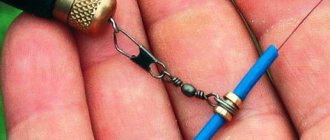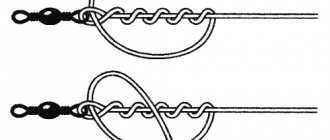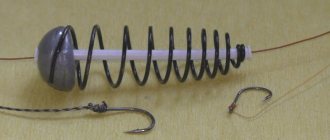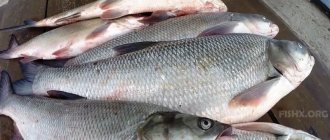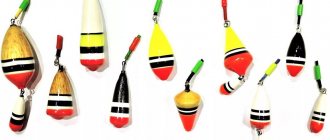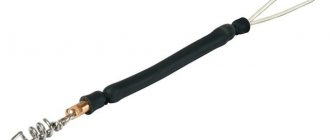How to choose a sinker for a float rig? What types of sinkers should you use? Why do you need to use several pellets in your equipment at once? You will learn about all this and much more in this article.
Loading a float is a rather filigree procedure that requires precision and delicacy. Unsuccessful loading will upset the balance of the equipment, which is why fishing may become unsuccessful for a banal technical reason.
Insufficiently loaded float will “hide” light and cautious bites from your eyes, while an overloaded float will constantly give false signals.
When constructing any float rig, you need to remember a simple rule: the lighter the weight of the sinkers and the greater the distance between them, the slower the rig will sink. Naturally, if the weights are heavy, and even collected together, then the equipment will sink faster.
The main sinker is the main part of the weight, which contributes to the full or partial (¼ part remains above the water) immersion of the float body. This could be just one large weight or a series of small weights.
The bait is a small weight that is closest to the hook with the nozzle and helps to record light bites at the very bottom.
pellets
Shots are the most common type of weight for loading floats. They are quite reliable and convenient in terms of attachment to the fishing line. Thanks to their spherical shape, such float sinkers create a minimum of resistance in the water. Nowadays, pellet sinkers can be found in every fishing store or simply on the market, and their assortment is quite large. You can match almost any float with pellets of the required weight and easily attach them to the fishing line.
At home
- Cut 4 mm of cambric and insert the end of the main line into this cambric.
- Thread the end of the line into the eye of the float.
- Place a cambric on the top of the float.
- Look at the markings on the float; it is best to load it with at least 3 lead pellets. For example, if the load capacity is 5 g, then attach 3 pellets weighing 1.5 grams each to the fishing line.
- Pour water into a 1.5-2 liter plastic bottle and lower the resulting float equipment into it.
- Our task is to load the float so that only the tip remains on the surface of the water.
If the thickened part of the float body also rises, then there are not enough lead pellets, add another 0.5-1 g.
What to do if the float is overloaded? If the float sank after loading, or there is too little part of the six above the surface of the water, cut off the excess lead with pliers. Try plucking small pieces parallel to the line as it passes through the lead pellet to avoid accidentally cutting the line.
Olives

Olives are sinkers of a characteristic shape with the concentration of the load at one point. Such weights can be useful, for example, when fishing in currents or in places with great depth. Also, olive sinkers fly well, so they allow you to make longer casts than when using the same pellets.
Shapes of sinkers
Fishing weights have different configurations, which depend on the reservoirs, climatic conditions, and fish species. In fast-moving rivers, a form with resistance to water currents is required. A flat configuration is not suitable for long casts, because... Compact shapes that allow sliding are required.
The forms of cargo models are divided into:
- spherical;
- pear-shaped;
- with 3 blades;
- in the form of a spindle, etc.
Ball-shaped
Ball-shaped weights are compact and ergonomic; due to their large mass, they are optimal for creating self-cutting. The element sinks the line with the hook to the bottom quickly. The disadvantage of the product is that the design is not grippy, so the load is not suitable for fishing on the slopes of fast-water rivers and for spinning rods.

Fusiform
The spindle-shaped weights are streamlined and taper towards the end. The products are optimal for long-distance casting, but are inferior to improved distance weights. Spindle-shaped elements are suitable for muddy lakes. The streamlined configuration allows you to quickly remove the tackle from under snags, stones, and algae.
Pear-shaped
Pear-shaped weights ensure precise casting and are also suitable for self-hooking fish. The design is optimal for fishing in strong winds. The weight of pear-shaped weights is average and varies from 30 to 80 g. The design solution is not suitable for reservoirs with standing water, snags and thickets.
Three-blade
A weight with a three-bladed configuration is optimal for long-distance float casts and rivers with a muddy bottom. The lower part of the product has a flat shape and 2 elongated convex edges. An additional rib is placed in the center of the load. Due to its complex configuration, the product sinks into the water more slowly than rounded and elongated models.
Sheet lead
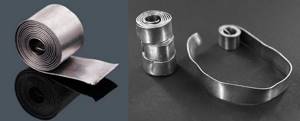
Using it is quite difficult, since choosing the right weight of the sinker is not easy. Testing of float load in water is required. But there is one big advantage of such a sinker - ease of manufacture. Sheet lead can be made at home by first flattening the desired piece of lead with a hammer and cutting this flat sheet of lead with ordinary scissors.
How to properly set up a bite indicator for crucian carp
When biting, the crucian carp feels the heavy weight of the sinker. He gets scared and spits out the bait. A few small weights evenly spaced throughout the rig will help you avoid trouble. When shipping, about 1 cm of the float antenna should remain above the water. Everything else is submerged in water. If the angler knows how to properly load the float onto the crucian carp, he will receive maximum sensitivity of the bite indicator.
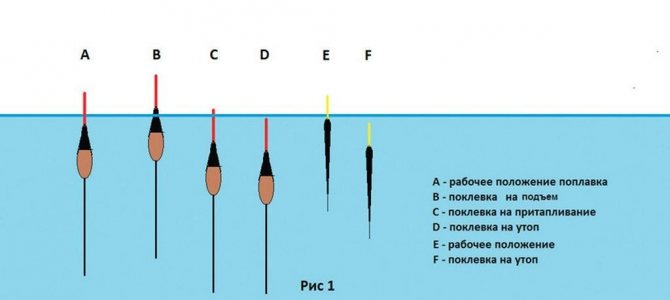
The right float for crucian carp
Setting the float for roach
Roach bites are accompanied by drowning of the float. Its minimal resistance allows you to clearly detect even the most careful bite. When fishing in the lake, one pellet is used. When there is a current, it is recommended to install several pellets at a certain distance from each other. The float body is completely submerged. A small part of the antenna remains above the water.
Setting up a float for carp
When fishing for carp or other large fish, the shipment is carried out using a grappling hook. This makes bites more noticeable. The main difference between this method is sensitivity. Having grabbed the bait, the fish will have to lift the entire weight of the equipment at once. She gets scared and spits out the bait. When using a feeder, it is enough for the carp to disturb a smaller part of the load, which is immediately displayed on the float.
Fly rod setup
Fishing with a fly rod involves frequent casting and hooking. Often, small fish actively bite at the feeding point, preventing the bait from sinking to the bottom. Special attention is paid to shipping here. Small pellets are used. Depending on the situation, they are located at a certain distance from each other. The correct placement of weights sinks the tackle at different speeds. The bait will quickly pass through depths where bites are not expected and slow down at the depth of interest.
Read more
How to catch trout with a bombard?

Fly rod setup
Loading the float with several pellets
As a rule, to load floats, it is pellet sinkers that are used in a certain quantity, which can reach up to 10 pieces. By correctly selecting the weight and number of pellets, you can place them on the fishing line so that the hook with bait, when immersed, smoothly passes through all the water horizons or, on the contrary, lingers in one of them.
The speed at which the hook and bait fall is controlled by changing the distance between the weights.
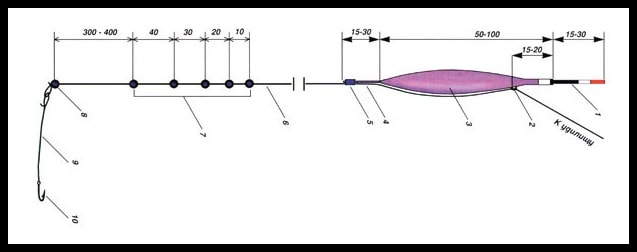
So, if you have a float model with a load capacity of 2 g, then to load it you will need 5-6 pellets with a total weight of the same 2 g. If the load capacity exceeds the mark of 2.5-3 g, then it becomes quite appropriate to use and weights in the shape of olives.
However, do not rush to tightly crimp the sinkers, relying only on the numbers on the packaging. The weight of the sinker and the carrying capacity of the float may be inaccurate, so if possible, it is better to check the load experimentally, that is, by immersing the equipment in water.
It is also worth noting that the weight of the sensitive float is also affected by the hook, so test the weight of your equipment together with it.
How to choose a sinker for a float
I wish you good health. What is the difference between floats weighing from 5 grams and above 12 grams for mounting a float rod? From my experience, I bought a float with a proven weight of 10 grams and began to mount it for a Bologna rod. I collected according to the standard scheme for floats from 2 grams to 4 grams, and immediately noticed the shortcomings and problems when throwing the float gear into the water. I’ll try to tell you my experience step by step on how to set up a float weighing from 5 grams to 12 grams.
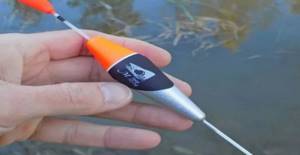
photo What is the weight of a sinker on a float weighing 5 grams or more
What is the weight of the sinker on a float weighing 5 grams or more?
- Rod - for a heavy float we use a length of 4 meters and above.
- From the experience of installing a heavy float, I realized that it can be successfully used for fishing from depths of at least 3 meters and above 8 meters. This can be understood if you assemble a float weighing more than 5 grams.
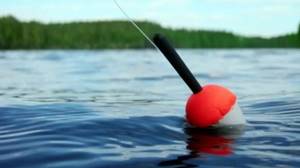
photo What is the weight of a sinker on a float weighing 5 grams or more
- The main line with a diameter of 0.2 mm is wound on any reel.
- Knit a stopper or put a silicone stopper - of all the options, it’s easiest to put a silicone stopper and not worry about knitting a stopper fishing knot. It’s a matter of taste and desire; of course, the right silicone can jump into the “tulip” and create a nervous spanking for the fisherman. How to tie a fishing stop knot?
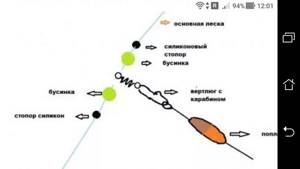
photo What weight did you dream of for a float weighing 5 grams or more
- We must install a bead for the locking knot if we do not use a silicone knot.
- The second silicone stopper regulates the level of free play and the depth of the float. It also helps to avoid getting caught in the leash with the float.
- The main sliding lead weight is 65% of the weight of the total real weight of the float, the rest is loaded with lead pellets.
- Silicone stopper - I usually install several pieces at a time and regulates the free movement of the sliding lead weight.
- We knit a swivel with a clasp for attaching a leash with a fishing hook. For the swivel we use a palomar fishing knot.
- We use a leash with a fishing hook with a total length of 12 cm and above 40 cm, keeping in mind the possible overlap when casting the entire tackle with a float weight of 5 grams or more.
- How to avoid overlap, regulate the free movement of the float and lead weight, and also show great patience when fishing with a heavy float. Since the minimum depth of 1.2 meters and above is calculated in the installation diagram, I came to this understanding from my experience.
- In some installation schemes for Bolognese tackle, a piece of insert about 1 meter is used between the lead weight and the lead leash with a hook.
- We carefully look at the drawing and installation diagram: what is the weight of the sinker on a float weighing 5 grams and above.
—
Selection of sinkers for fishing in the current
For fishing in the current, more careful loading of the float is required due to complicated conditions. In order for the tackle to be carried away more slowly by the current, it is necessary to reduce the distance between the pellets and secure them closer to the hook with the nozzle. You can also use one olive sinker, and attach several smaller pellets below. The latter loading option will reduce windage and allow the bait to sink to the bottom faster, bypassing the unwanted influence of the current.
Author of the article: Vitaly Leonidovich Ivanov, 2021.
Shipment Process
Content
The float is shipped depending on the fishing conditions:
- loading when fishing in still water does not cause difficulties;
- During the current, it is recommended to place the float closer to the hook. Here, not one load is often used, but several, evenly distributing them on the fishing line;
- when catching large fish, fine tuning is not so important; such bites are more noticeable;

Proper float loading
- Catching small fish requires the use of more sensitive equipment. Here the weights are located as close as possible to the hook. By distributing the weight evenly throughout the line, you will notice even the most cautious bite;
- when fishing at close range, an even distribution of pellets is used;
- When casting long distances, it is recommended to use a concentrated version, allowing the float to be located close to the hook.
Loading a float in windy weather
The main enemy of a fisherman with a float rod is the wind. You have to get used to such fishing conditions. But it is unlikely that it will be possible to accurately adjust the float for such weather. Use special devices. They allow you to make shipment at home using a large container of water.
If you had to unload directly on a pond in windy weather, it is recommended to underload the bite indicator, leaving part of the float body on the surface of the water. This is what the optimal equipment looks like when fishing in windy weather. When the waves calm down, additional pellets are added so that the body of the float is completely hidden in the water.
Read more
How to make a float with your own hands?
Which is better, sheet lead or pellets?
To properly load a float on a summer fishing rod, choose one of two sinker options. Each of them differs in some features.
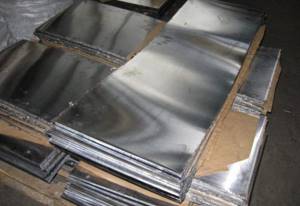
Sheet lead for fishing
Here the choice depends on the size of the expected catch:
- Sheet lead. Such a load is conveniently put on the fishing line and squeezed by hand. But its main drawback is the difficulty of accurately selecting the weight that matches the float. The disadvantages also include their bulkiness. If the weight lies next to the hook, it will scare away wary fish. When casting, the weight-plate “plops” a lot. Taking these nuances into account, it is recommended to use sheet lead when catching large fish.
- The pellets. A familiar and modern option. A set of weights allows you to correctly load any float. The pellets vary in weight, making the setup process even easier. Neat and barely noticeable weights are used when catching small fish. To obtain good stability of the equipment in the current, several pellets are distributed along the fishing line.
How to choose the correct weight for a float?
Look at the circumstances. Loading, dimensions and type of bait, installation method - these are things that need to be adjusted to the real situation “here and now”. The basic law of fishing: you cannot thoughtlessly cast the fishing rod and turn the handle - you need to clearly understand what we are doing, why and why.
Let's go pike fishing - take care of the minimum load for a specific distance, current strength and depth of the reservoir. This won’t work with pike perch – you shouldn’t fish with it. Pike is greedy for a uniform retrieve and the horizontal phase of the jig, while pike perch is easier to catch with sudden movements closer to the bottom. Why? Unlike pike perch, which still needs to be successfully cast, pike hunts at shallow depths. But remember: these are all conventions. It happens that the pike perch is very close, but the pike, on the contrary, is far away.
However, the trend is still visible. Light weight for spearfishing means slow retrieval, smooth delivery and easier transition to the horizontal phase. Heavy load – sudden movements, aggressiveness, long casts. Fishing on the surface is a light load; if you need to drag it with pauses along the bottom, you will have to make it heavier. Of course, there is a risk of overdoing the weight of the jig load - to avoid this, we recommend listening to feedback from the fish. Has the pecking gotten worse? Fewer bites? We change the weight.
